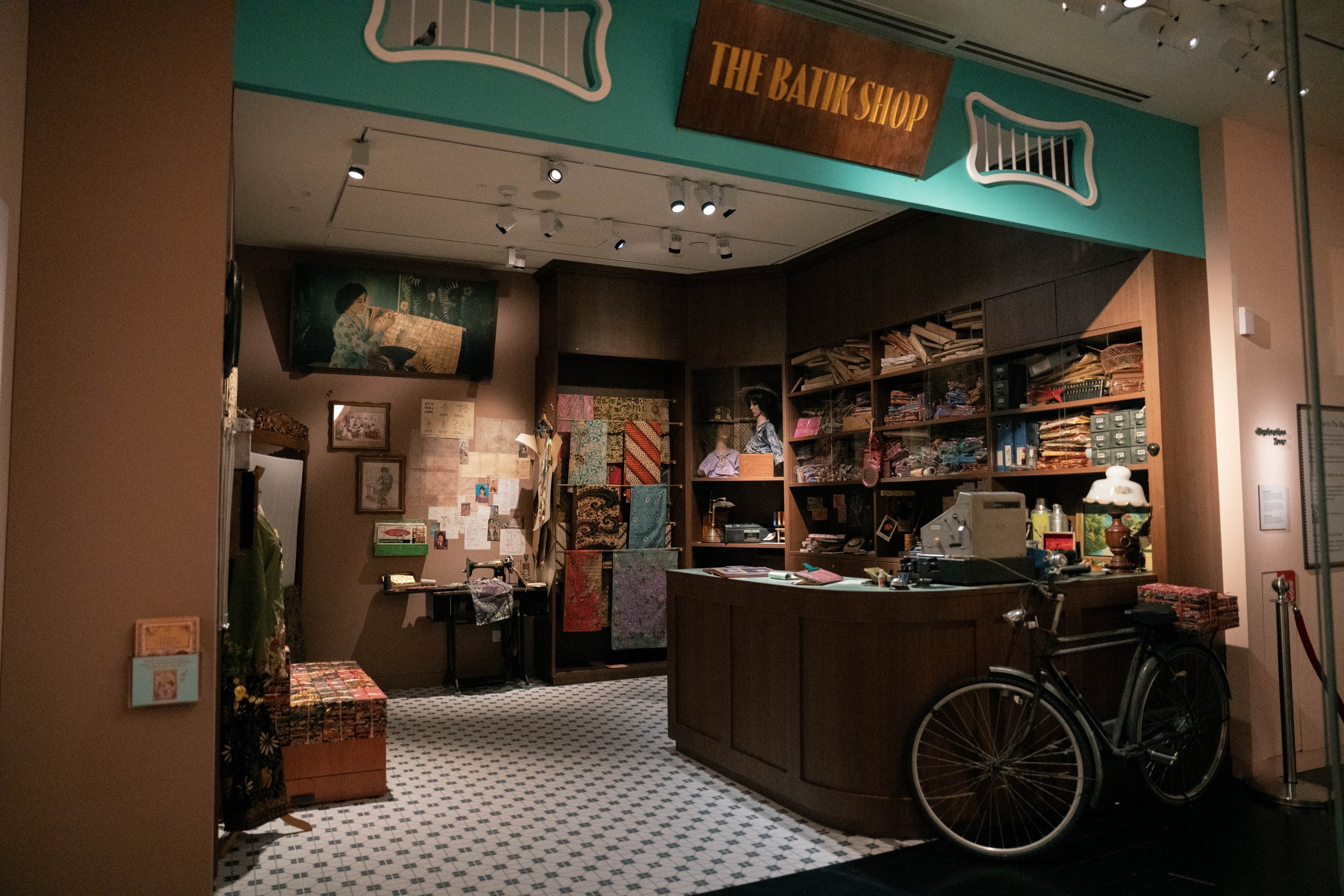Batik Nyonyas: Three Generations of Art and Entrepreneurship at Peranakan Museum
Batik Nyonyas
Three Generations of Art and Entrepreneurship
October 11, 2024 — August 31, 2025
Family, art, and entrepreneurship converge in the story of three visionary Peranakan women from Indonesia – Nyonya Oeij Soen King, her daughter-in-law Nyonya Oeij Kok Sing, and her granddaughter Jane Hendromartono. From the 1890s to 1980s, they produced impressive batiks in the renowned batik centre of Pekalongan on Java’s north coast.
This exhibition explores the lives and works of these women, revealing how each became a batik master in her own right, and how they responded to the rapid political, cultural, and economic changes of their times to run a business that produced great art.
Nyonya Oeij Soen King (1871–1950), a master of natural dyes who innovated within established styles
Nyonya Oeij Soen King was one of several women who fronted batik businesses in Pekalongan in the 1890s, just as it was emerging as Java’s leading batik-making centre. In an increasingly competitive industry shaken up by the introduction of block-printed batiks, Nyonya Oeij was a creative entrepreneur who produced finely drawn batiks in a totally individualistic style. She worked out of her home workshop for about 25 years, until 1925.
Nyonya Oeij Kok Sing (1895–1966), a master of colour who reimagined batik in unconventional hues
The story continues with Nyonya Oeij Kok Sing, who was running the family workshop by 1929. During this period, fast-dyeing European synthetic dyes expanded the range of tones, leading to a surge in production and creative experimentation. Rising demand for fashionable batik sarongs and kebayas, as well as loosening social restrictions on women, led to the widespread commercialisation of the batik industry. Notably, she was the only Indonesian artist who signed and stamped her batiks with dates, suggesting that she considered batik to be an important art form.
Jane Hendromartono (1924–1988), an artist of many names who adapted to challenging social conditions
Jane Hendromartono was the third generation of the Oeij family, one of six siblings who continued her mother’s legacy. She displayed a remarkable knack for responding to market forces: in the 1950s, she created innovative interpretations of the batiks in the viral Kudus style. She was quick to respond to the national Batik Indonesia style, producing modern batiks for fairs and official events, which found ready buyers among the elite. In the 1970s she moved into the realm of high fashion, collaborating with top fashion designers to develop Indonesian haute couture.
Exhibition Preview












